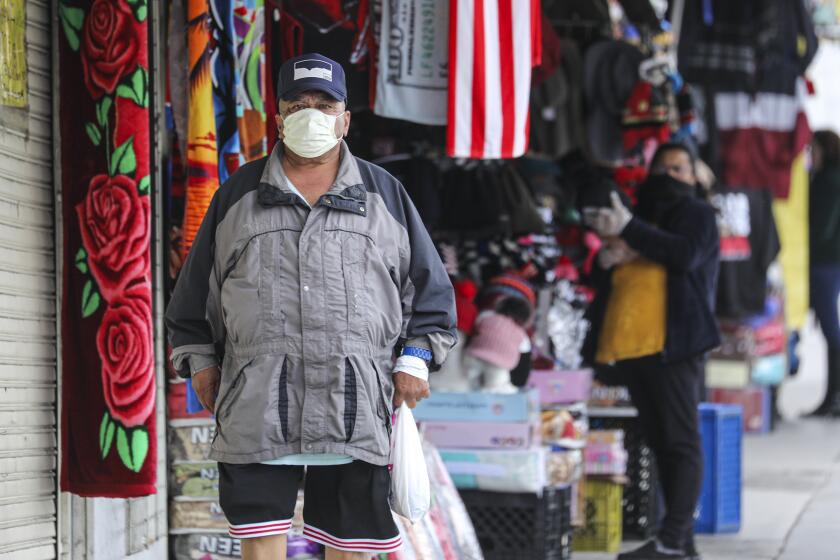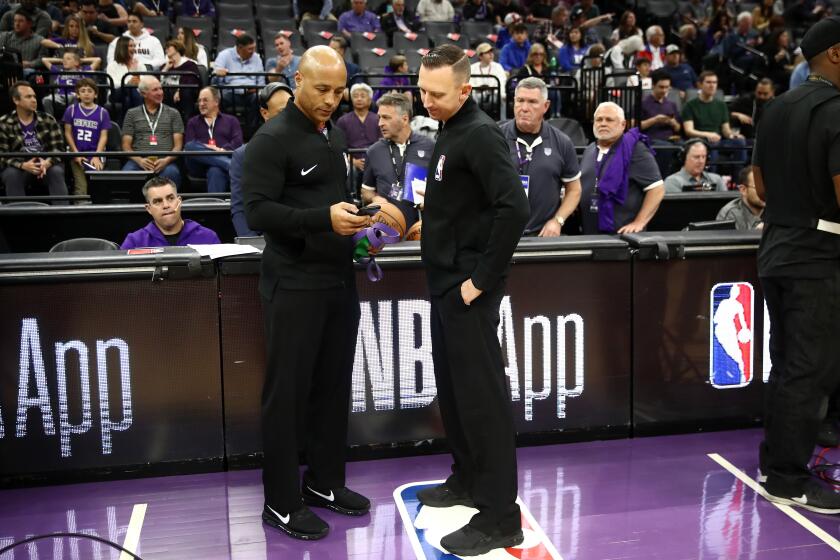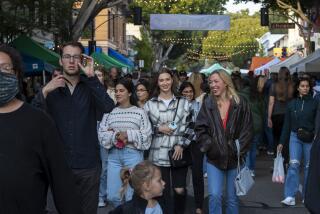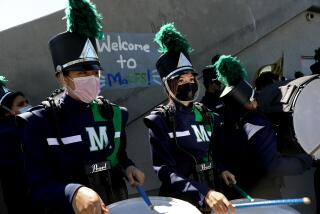Large gatherings should be canceled due to coronavirus outbreak, California Gov. Gavin Newsom says
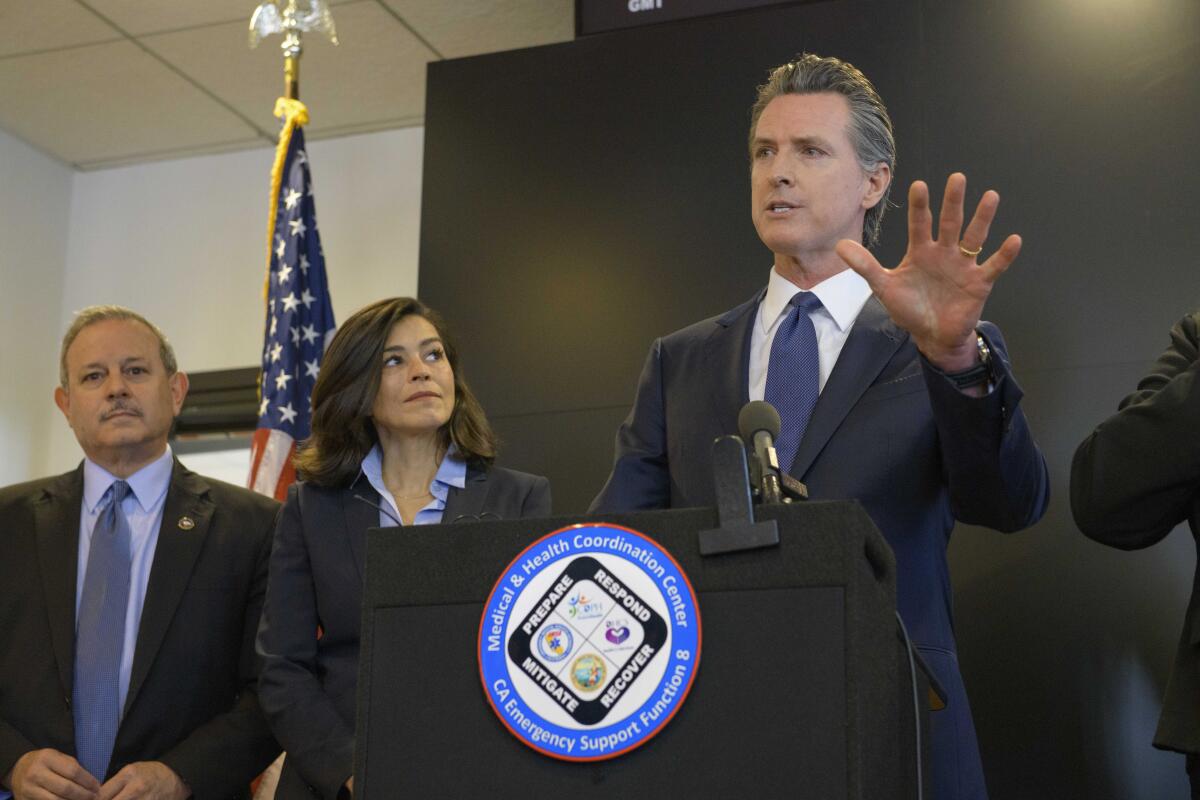
- Share via
SACRAMENTO — Gov. Gavin Newsom joined state health officials in recommending the cancellation of gatherings of 250 or more people across the entire state, escalating the effort by his administration to slow the spread of the novel coronavirus.
The new policy from California Department of Public Health, which will be in effect at least through March, marks the first time the state has issued a request for all residents across California to adopt so-called “social distancing” measures and represents a new sense of urgency in the administration’s approach to fighting the virus in a state with 177 confirmed cases.
“Changing our actions for a short period of time will save the life of one or more people you know,” Newsom said in a statement. “That’s the choice before us. Each of us has extraordinary power to slow the spread of this disease. Not holding that concert or community event can have cascading effects — saving dozens of lives and preserving critical health care resources that your family may need a month from now. The people in our lives who are most at risk — seniors and those with underlying health conditions — are depending on all of us to make the right choice.”

Here’s a quick guide to how the novel coronavirus spreads, how likely you are to get it and what you can do to stay healthy.
The size recommendations have the potential to touch virtually all corners of social life across the state — community meetings, sports events and school theater performances.
The new guidelines broadly apply requirements that have been adopted in counties across California that are struggling to combat community spread of the virus. Until now, the decision to implement such measures has been left to the discretion of county public health officials, who the governor previously said are best equipped to make decisions for their communities.
In recent days, counties including Santa Clara, Sacramento and San Francisco, have shifted from aggressively tracking and tracing every known contact of a confirmed COVID-19 patient to asking residents to avoid congregating in large groups. Some counties have warned the elderly and people with underlying health conditions, such as asthma, chronic obstructive pulmonary disease, diabetes, chronic liver disease, blood disorders and other conditions, to remain at home as much as possible.
Public health experts say county health departments make the change when the virus spreads at a scale that makes it difficult to trace everyone who may have been potentially exposed to the disease, allowing officials to focus resources on protecting hospitals, nursing homes and other facilities most at risk.
The new directive also reflects guidelines issued by the Centers for Disease Control and Prevention this week to cancel large gatherings greater than 250 people in communities with minimal to moderate community spread.
The California recommendations say small events at venues that do not allow 6 feet of space between people should be postponed or canceled. Gatherings of people at high risk of severe illness from COVID-19 should be limited to no more than 10.
Get the latest coronavirus updates from our staff in California and around the world.
State health officials offered a series of suggestions on making gatherings less susceptible to the spread of coronavirus if the event is small or deemed essential. Those include staggering start times so that attendees don’t all show up at once, limiting the number of people who stand in lines and adding space between places where people sit or stand.
The advisory, which does not carry the force of law, stops short of asking Californians to change their work, travel or even some leisure habits. A document provided by the governor’s administration said the limit on large gatherings does “not apply to essential public transportation, airport travel, or shopping at a store or mall.”
Los Angeles Mayor Eric Garcetti said he and other mayors were briefed on the plan by the Newsom administration earlier Wednesday night. In an interview on CBS2 TV, he said L.A. would follow suit on limiting large gatherings.
“We should not have Angelenos going to those unless they are absolutely essential business gatherings,” Garcetti said. “But even in that case, we think that should be avoided.”
It remains to be seen whether Newsom’s late-night announcement reflects the full extent of how far he’s willing to go to change the daily behavior of Californians.
State laws grant broad authority to local and state officials in times of a health or safety crisis. Following the 2001 terrorist attacks, those laws were updated to allow for an emergency declaration to respond to any “imminent and proximate threat of the introduction of any contagious, infectious, or communicable disease, chemical agent, noncommunicable biologic agent, toxin, or radioactive agent.”
The governor also has powers under the state’s Emergency Services Act — including the ability to make far-reaching decisions, as the law states, if he “finds that local authority is inadequate to cope with the emergency.”
Invoking those statutes could come with considerable political risk, likely upending the existing working relationships the Newsom administration has sought to establish with counties and cities most heavily impacted by the spread of COVID-19 cases.
Newsom’s announcement extends the administration’s previous recommendations for event organizers to create contingency plans in counties without confirmed COVID-19 cases and to make preparations to cancel non-essential large-scale events in counties with confirmed cases of the virus.
The governor’s request came hours before Gov. Kate Brown of Oregon is expected to announce new orders addressing mass gatherings, social distancing, workplaces and other statewide mitigation efforts at a press conference on Thursday.
As California called for a ban on gatherings of 250 or more people, Disneyland took the unprecedented action of announcing it will close the park through the end of the month.
Governors along the West Coast have scrambled in recent days to get out in front of a growing problem that was hardly noticeable just a few weeks earlier.
California officials have said there’s a possibility that international travelers brought COVID-19 to the state in January and before the first patients tested positive.
“I mean our best estimate is sometime in January, but we’re not exactly certain,” said Dr. Mark Ghaly, secretary of California Health and Human Services.
As of Wednesday, more than 11,000 international travelers who returned to the state through San Francisco or Los Angeles international airports were self-monitoring for any signs of the disease.
California’s growth will slow this year as unemployment rises and job creation weakens in the wake of the coronavirus outbreak, according to a UCLA forecast.
The Newsom administration has activated emergency operations centers and said state resources have been deployed to counties that request help. The governor declared a state of emergency last week to remove any regulatory restrictions related to response efforts.
Newsom said Tuesday that his administration had requested additional testing kits from the U.S. Centers for Disease Control and Prevention and has begun distributing some 21 million masks to healthcare facilities from a reserve of state supplies.
More to Read
Sign up for Essential California
The most important California stories and recommendations in your inbox every morning.
You may occasionally receive promotional content from the Los Angeles Times.
